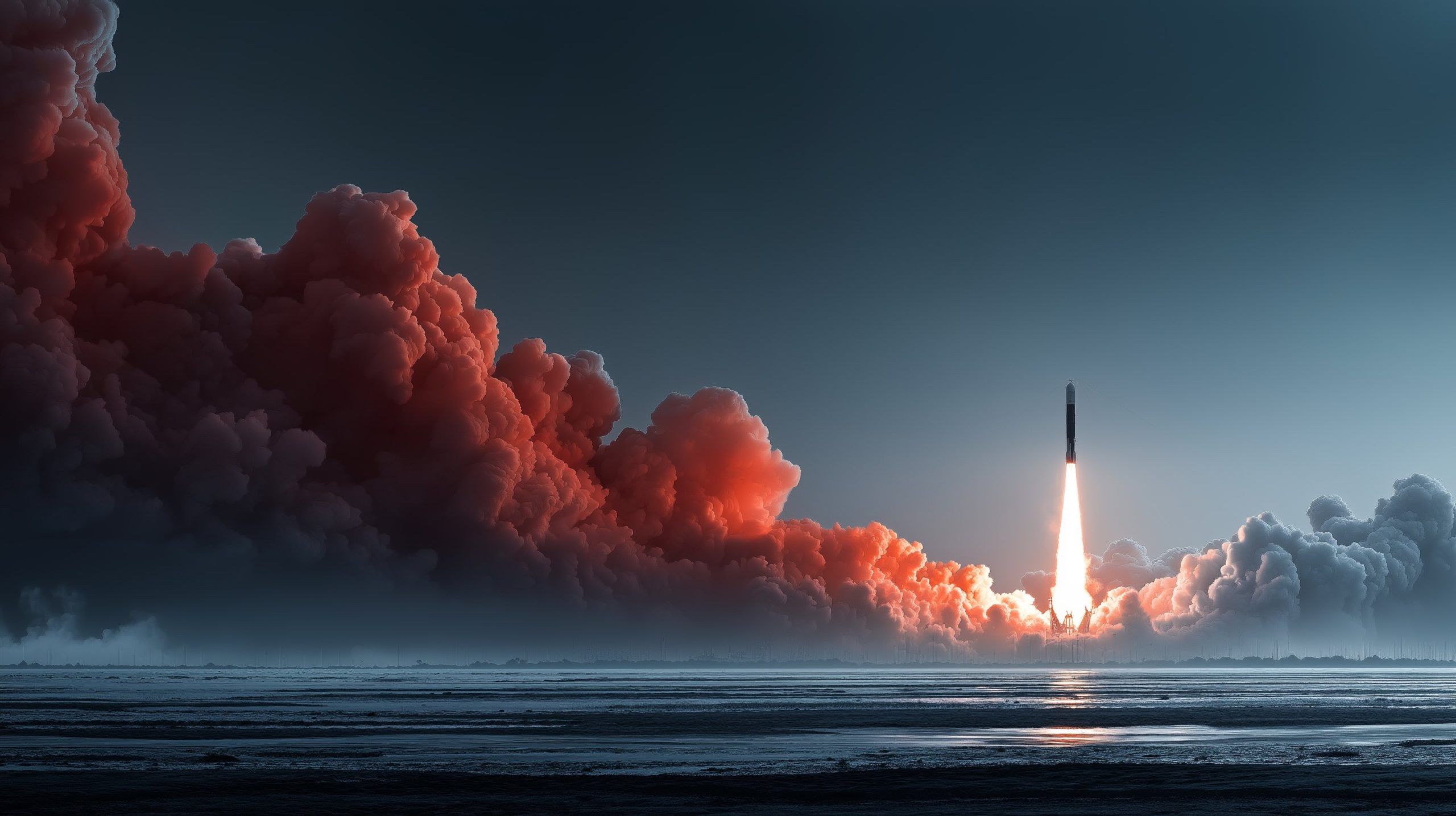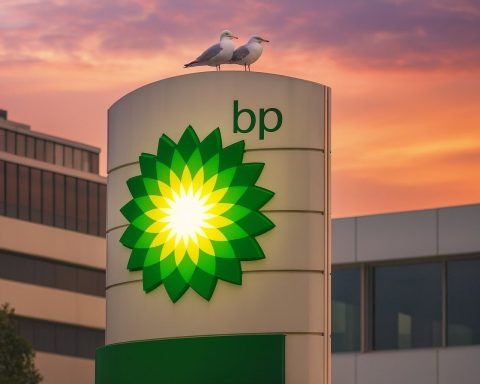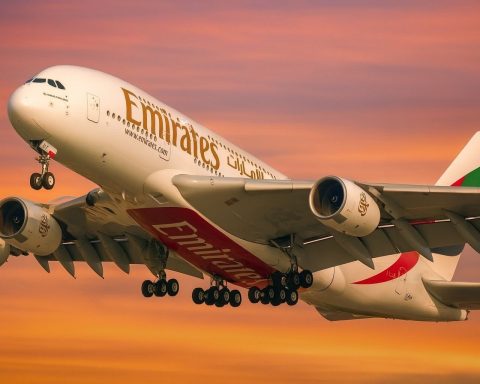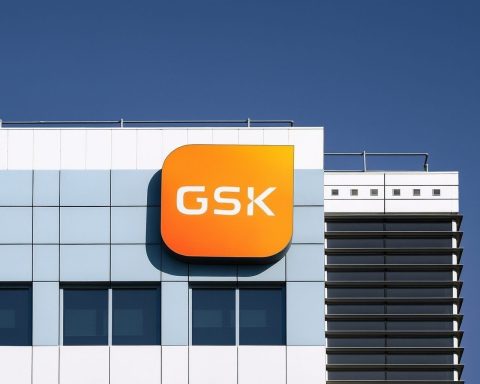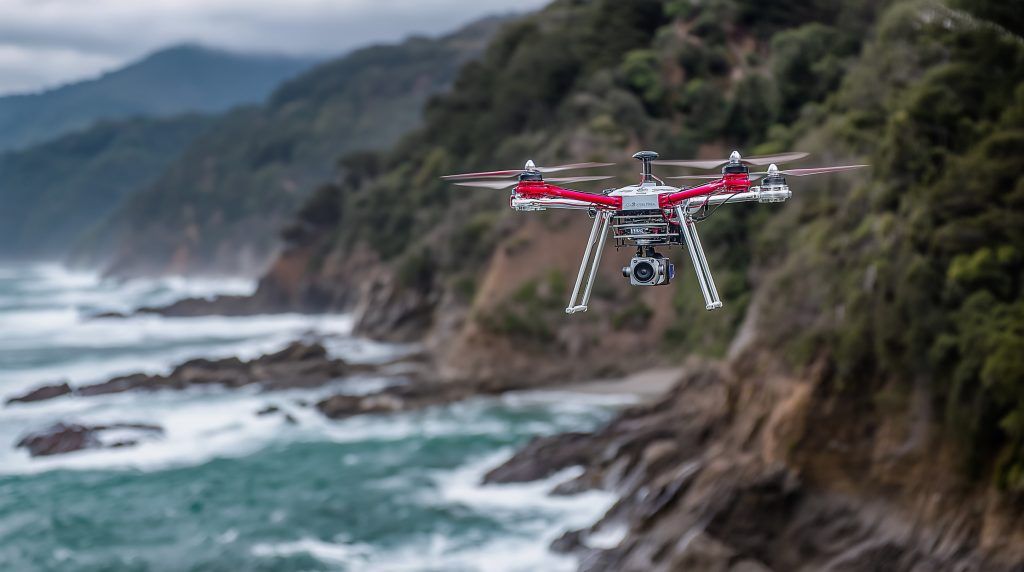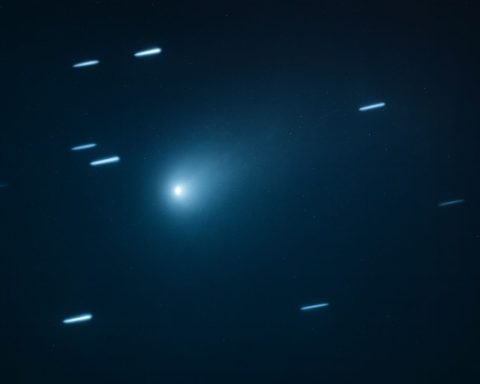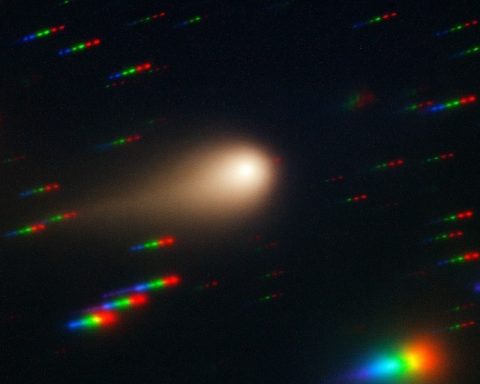- Aug 4, 2025: Blue Origin New Shepard NS-34 launches from Site One, West Texas, on a suborbital tourism flight carrying a private crew of six, Blue Origin’s 14th crewed mission.
- Aug 4, 2025: SpaceX Falcon 9 launches Starlink 10-30 from SLC-40, Cape Canaveral, delivering a batch of 22 Starlink satellites to low Earth orbit, adding to SpaceX’s fleet of over 7,000 Starlinks in orbit.
- Aug 8, 2025: ULA Vulcan Centaur conducts USSF-106 from SLC-41, Cape Canaveral, marking its debut national security mission and replacing Atlas V with BE-4 engines to loft dozens of military satellites.
- Aug 12, 2025: Arianespace Ariane 6 VA264 from ELA-4, Kourou, launches MetOp-SG A1 (4,000 kg) and Sentinel-5 to a sun-synchronous orbit, marking Europe’s first commercial flight of Ariane 6.
- Aug 21, 2025: SpaceX Falcon 9 launches USSF-36 (X-37B OTV-8) from LC-39A, Kennedy Space Center, carrying the reusable X-37B spaceplane with laser communications and a quantum inertial sensor.
- Sept 11, 2025: Roscosmos Soyuz 2.1a launches Progress MS-32 from Baikonur to resupply the ISS, the 93rd Progress mission.
- Oct 5, 2025 (approx): China Long March 2F launches Shenzhou 21 Crew Mission to Tiangong for about six months, the 16th crewed Chinese spaceflight with a three-astronaut crew.
- Oct (NET): Blue Origin New Glenn launches Blue Moon Mk1 Lunar Lander from LC-36, Cape Canaveral, sending a 21-ton lander toward the Moon after a 7 m diameter, fully reusable first stage, able to deliver up to 3 metric tons to the lunar surface.
- Nov 16, 2025: SpaceX Falcon 9 launches Sentinel-6B from SLC-4E, Vandenberg Space Force Base, carrying the ocean-monitoring satellite to a 1,300 km orbit to extend the sea-level record by about a decade.
- Nov 27, 2025: Roscosmos Soyuz 2.1a launches Soyuz MS-28 from Baikonur to the ISS with three crew members, continuing NASA–Roscosmos crew exchanges.
Introduction
The global space industry is gearing up for a record-breaking launch cadence in the coming months. From crewed missions and Moon landings to massive satellite deployments, nearly every week will see a rocket lifting off somewhere around the world. SpaceX alone aims for up to 170 launches in 2025, almost one every other day [1] – a stunning figure made possible by reusable rockets and relentless innovation. Other space agencies and companies are also ramping up, with new vehicles debuting and ambitious missions on the horizon. In short, 2025 is poised to be one of the busiest – and most exciting – years in spaceflight history. Below, we break down all the upcoming launches (government and commercial), complete with dates, rockets, missions, payloads, and why they matter.
(Note: Launch dates are subject to change. “NET” means No Earlier Than.)
Launch Schedule: August – December 2025
August 2025 – Liftoff Frenzy
- Aug 4 – Blue Origin New Shepard (NS-34) – Launch Site One, West Texas – Suborbital Tourism Flight. Carries a private crew of six on a short suborbital hop, reaching the edge of space before parachuting back down [2]. This is Blue Origin’s 14th crewed flight, reflecting the growing space tourism market.
- Aug 4 – SpaceX Falcon 9 – Starlink 10-30 – SLC-40, Cape Canaveral (Florida) – Batch of 22 Starlink internet satellites to LEO. One of SpaceX’s near-weekly Starlink launches delivering broadband satellites to low Earth orbit [3]. Over 7,000 Starlinks are already in orbit, expanding global internet coverage [4]. (SpaceX has several Starlink missions in August, including another from California on Aug 9 with 17-4 and one from Florida on Aug 10, underscoring its rapid launch tempo.)
- Aug 4 – CASC Long March 12 – SatNet Group 05 – Pad 101, Wenchang Space Center (China) – Deployment of “SatNet” communications satellites to LEO. Launch of China’s nascent broadband megaconstellation (similar to Starlink) by the China Aerospace Science and Technology Corp [5] [6]. Demonstrates China’s push into internet-from-space, with Wenchang’s coastal site enabling high-frequency launches.
- Aug 8 – ULA Vulcan Centaur – USSF-106 – SLC-41, Cape Canaveral (Florida) – Debut national security mission for the Vulcan rocket. This brand-new heavy launcher from United Launch Alliance carries a classified U.S. Space Force payload [7]. “It’s incredibly exciting…we’ve stacked the rocket at the Cape and are in pre-launch processing,” said Mark Peller of ULA [8]. Vulcan will replace the Atlas V and uses Blue Origin’s BE-4 engines [9], finally eliminating U.S. reliance on Russian RD-180 engines. USSF-106 is a crucial test of Vulcan’s readiness to loft dozens of military satellites in coming years.
- Aug 9 – SpaceX Falcon 9 – Starlink 17-4 – SLC-4E, Vandenberg SFB (California) – Another Starlink launch delivering 20+ satellites into polar low Earth orbit [10]. By mid-2025 SpaceX’s Falcon 9 had flown 500 missions overall [11], a milestone achieved largely through Starlink. These frequent flights underline Falcon 9’s reusability and reliability, which SpaceX credits for making “launching every 2–3 days” feel “somewhat normal” [12].
- Aug 12 – Arianespace Ariane 6 – VA264 (MetOp-SG A1 & Sentinel-5) – ELA-4, Kourou (French Guiana) – First commercial flight of Europe’s new heavy rocket. An Ariane 6 in its 2-booster configuration will launch EUMETSAT’s MetOp-SG A1 weather satellite (4,000 kg) carrying the ESA Copernicus Sentinel-5 atmospheric monitoring instrument to a sun-synchronous orbit [13] [14]. This inaugural Ariane 6 mission (VA264) marks Europe’s transition from the retired Ariane 5. “This launch is an early indication of what Ariane 6 can do…[it] is set to launch all kinds of missions into space for Europe,” noted ESA’s Toni Tolker-Nielsen [15]. Success will restore Europe’s independent access to space and support decades of climate and weather forecasting [16] [17].
- Aug 20 – Roscosmos Soyuz 2.1a – Bion-M No. 2 – Site 31/6, Baikonur (Kazakhstan) – Biological research satellite to LEO. Russia will launch its Bion-M2 capsule, laden with live specimens (e.g. mice, microbes, plants), to study the effects of microgravity on living organisms. After ~30 days in orbit, Bion-M2 will return to Earth with its experiments. This is Russia’s first Bion mission since 2013, resuming a Soviet-era biosatellite program for space medicine advances [18]. (Notably, Aug 20 also marks the 60th anniversary of the Vostok-6 flight in 1965 – illustrating the long arc of biological space research.)
- Aug 21 – SpaceX Falcon 9 – USSF-36 (X-37B OTV-8) – LC-39A, Kennedy Space Center (Florida) – Launch of the secretive X-37B spaceplane. A reusable Boeing-built mini-shuttle (about 9 m long) will be boosted to low orbit on OTV-8, the eighth flight of the U.S. Air Force’s X-37B orbital test vehicle [19]. The mission will test cutting-edge tech: laser communications links between the spaceplane and orbiting satellites, and a “quantum inertial sensor” for navigation without GPS [20]. The solar-powered X-37B can stay in orbit for months or years conducting experiments, then autonomously re-enter to land on a runway. (Its last mission set a record 908 days in orbit!). USSF-36 underscores the Space Force’s growing use of the X-37B to rapidly test and deploy new space capabilities.
- Late Aug (NET) – SpaceX Falcon 9 – CRS-28 (Dragon CRS-33) – LC-39A, Kennedy Space Center – ISS Cargo Resupply. A Cargo Dragon capsule will deliver several tons of supplies, experiments, and hardware to the International Space Station. Uniquely, this Dragon’s trunk carries a new propulsion module to boost the ISS’s orbit, a demo for SpaceX’s planned ISS deorbit vehicle [21]. (The exact launch date depends on ISS scheduling and Crew-11’s arrival [22].) With this mission, SpaceX continues its role as a workhorse for NASA’s Commercial Resupply Program, ensuring the ISS remains stocked and orbiting safely.
September 2025 – Science and Resupply
- Mid-Sept (NET) – SpaceX Falcon 9 – NASA IMAP Mission – LC-39A, Kennedy Space Center – Interplanetary science probe to Sun–Earth L1. A Falcon 9 will launch NASA’s Interstellar Mapping and Acceleration Probe (IMAP) to the L1 Lagrange point ~1.5 million km from Earth [23] [24]. IMAP’s 10 instruments will map the boundary of the heliosphere – the bubble of solar wind enclosing our solar system – to learn how solar particles are accelerated and how solar and interstellar space interact [25]. Ridesharing on this launch are two smaller spacecraft: NASA’s Lunar Trailblazer/Carruthers Geocorona Observatory (studying Earth’s exosphere) and NOAA’s Space Weather Follow-On (SWFO-L1) satellite to monitor the Sun [26] [27]. All three will be injected toward the L1 point. This high-value science mission was recently prepared for launch at Kennedy Space Center [28] [29] and is targeted for no earlier than September 2025 [30]. It will fill critical gaps in heliophysics and space weather forecasting once in position.
- Sept 11 – Roscosmos Soyuz 2.1a – Progress MS-32 – Baikonur Cosmodrome – ISS cargo freighter. A robotic Progress vehicle will launch with food, fuel, and supplies for the International Space Station crew. (Progress missions occur roughly every quarter; this is the 93rd Progress to the ISS.) Progress ships use the same Soyuz rocket and typically dock autonomously to Russia’s ISS segment, then later burn up on reentry with trash. These steady resupply flights are critical for ISS operations, especially as NASA’s commercial cargo providers handle the rest.
- Mid-Sept – SpaceX Falcon 9 – Northrop Grumman NG-23 (Cygnus) – Cape Canaveral, FL – ISS cargo (Cygnus) on a Falcon 9. In a unique arrangement, SpaceX will launch Northrop Grumman’s Cygnus spacecraft on a resupply run to the ISS [31]. (Northrop’s own Antares rocket is being redesigned with Firefly Aerospace, so NG contracted launches on Falcon 9.) The NG-23 Cygnus will carry experiments and spare parts to the Station, helping bridge the gap until the new Antares or ULA’s Vulcan is ready for Cygnus flights. (The previous Cygnus, NG-22, was damaged in transport and skipped [32], so NG-23 is next up.) This cross-company collaboration highlights the flexibility of commercial space – and ensures the ISS logistics chain stays robust.
- Late Sept – JAXA Epsilon S – Technology Demonstration Flight – Uchinoura Space Center (Japan) – Debut of upgraded solid rocket (tentative). Japan may attempt the first flight of the Epsilon S, a modernized version of its small Epsilon launch vehicle, carrying demonstration payloads. (This schedule is tentative pending final readiness.) Epsilon S features a new first stage shared with the H3 rocket’s boosters, aiming to cut costs and improve performance. If it flies, it will mark Japan’s continued effort to offer small-satellite launch capabilities commercially.
(September will also see plenty of routine launches of satellites – e.g. China’s meteorological and Gaofen Earth-observation sats, more Starlink batches, etc. – but the highlights above capture the major missions and new developments.)
October 2025 – New Ventures to the Moon
- Oct 5 (approx.) – China Long March 2F – Shenzhou 21 Crew Mission – Jiuquan Satellite Launch Center (China) – Crew of 3 to Tiangong space station. China’s human spaceflight program will send three taikonauts to its Tiangong space station for a ~6-month stay [33] [34]. Shenzhou 21 is expected to launch around October 24, 2025 [35], shortly before the Shenzhou 20 crew returns, ensuring a continuous occupation of the Chinese station. This 16th crewed Chinese spaceflight will likely include veterans from China’s astronaut corps. A Long March 2F rocket – China’s trusty crew launcher – will boost the Shenzhou capsule to orbit, where it will rendezvous and dock with Tiangong’s Tianhe core module [36]. Why it matters: China’s steady cadence of Shenzhou missions (twice per year) signals its expanding capabilities and ambitions. Each mission brings China closer to its goal of a lunar human landing by 2030, while also conducting extensive microgravity research on Tiangong. (Notably, Shenzhou-21’s launch around China’s Space Day (Oct 24) underscores national pride in their space achievements [37].)
- Oct (NET) – Blue Origin New Glenn – Blue Moon Mk1 Lunar Lander – LC-36, Cape Canaveral (Florida) – Blue Origin’s first Moon landing demo. Jeff Bezos’s Blue Origin will attempt to deliver its Blue Moon Mark 1 lander to the Moon’s south pole in late 2025 [38] [39]. A colossal New Glenn rocket (7 m diameter, fully reusable first stage) will lift the 21-ton Blue Moon Mk1 into Earth orbit, then send it on a trans-lunar injection toward the Moon [40]. The lander will enter lunar orbit ~1 week later and descend to the surface under its own power [41]. Onboard will be NASA’s SCALPSS experiment, a camera system to study rocket plume effects on lunar dust during landing [42] [43]. This mission – sometimes called the “Blue Moon Pathfinder” – is essentially a test flight, proving out technologies (like the BE-7 hydrogen engines) for future crewed landers [44] [45]. Significance: It marks New Glenn’s inaugural launch and Blue Origin’s first beyond Earth orbit. The lander can deliver up to 3 metric tons of cargo to the Moon’s surface [46] [47]. Data from this mission will inform both NASA’s Artemis program and Blue Origin’s later Blue Moon Mk2 lander, which was selected by NASA to carry astronauts on Artemis V [48]. In short, a successful Mk1 landing would be a major milestone for commercial lunar exploration – effectively a private company’s Moon landing. (Blue Origin has publicly targeted as soon as March 2025 for launch [49] [50], but NASA’s official schedule lists it no earlier than October 2025 [51].)
- Oct (TBD) – Intuitive Machines Nova-C IM-2 Mission – Kennedy Space Center – Private Moon lander with NASA payloads. Houston-based Intuitive Machines plans to follow up its first Moon mission (IM-1 in Feb 2024) with a second Nova-C lander in late 2025. IM-2 is slated to carry NASA’s PRIME-1 drill to search for ice near the lunar south pole, among other instruments. After lessons learned from IM-1, Intuitive is upgrading its lander for better odds of success [52]. (IM-1 achieved launch but its landing outcome is unconfirmed publicly.) If IM-2 launches on time (likely via SpaceX Falcon 9), it could become the first U.S. commercial lander to successfully touch down on the Moon, demonstrating NASA’s Commercial Lunar Payload Services (CLPS) model.
- Late Oct – ISRO Gaganyaan Test Flight 1 – Satish Dhawan Space Centre (India) – Uncrewed orbital test of India’s crew capsule. The Indian Space Research Org. (ISRO) is preparing for the first flight of the Gaganyaan spacecraft, a crew-rated capsule designed to carry 3 astronauts to low Earth orbit. This initial mission (no crew aboard) will likely be launched by a Human-rated LVM3 rocket in Q4 2025 [53] [54]. It aims to validate the spacecraft’s systems and safety ahead of India’s planned first crewed launch in 2027 [55] [56]. Gaganyaan’s development has been closely watched as India’s entry into human spaceflight. A successful orbital test and recovery in late 2025 would make India only the fourth nation (after Russia, the U.S., and China) to fly a homegrown spacecraft to orbit, and would ignite national pride – ISRO has dubbed 2025 “Gaganyaan Year” in anticipation [57].
November 2025 – Crew Exchanges & Climate Satellites
- Nov 16 – SpaceX Falcon 9 – ESA/NASA Sentinel-6B – SLC-4E, Vandenberg SFB (California) – Ocean-monitoring satellite to LEO. A Falcon 9 will loft Sentinel-6B, the second of two advanced oceanography satellites developed jointly by NASA, ESA, EUMETSAT, and NOAA. Sentinel-6B carries a radar altimeter to measure global sea level rise with millimeter precision [58]. It will join its twin (Sentinel-6A Michael Freilich, launched 2020) in a 1,300 km orbit to continue a nearly 30-year continuous record of sea height. These data are vital for climate science, improving weather forecasts and tracking climate-driven changes like ice melt and ocean circulation shifts. NASA notes the Sentinel-6 series will extend our sea level record another decade [59]. (Launch was contracted to SpaceX for $94 million [60].) Expect breathtaking views from Vandenberg as Falcon 9 arcs over the Pacific – and a rare California droneship landing for the booster.
- Nov 27 – Roscosmos Soyuz 2.1a – Soyuz MS-28 – Baikonur Cosmodrome (Kazakhstan) – International Crew Flight to ISS. A Russian Soyuz will carry three crew members to the International Space Station: cosmonauts Sergey Kud-Sverchkov and Sergey Mikayev, and NASA astronaut Christopher Williams [61]. This flight, Soyuz MS-28, represents the continuing collaboration in orbit despite geopolitical tensions – an American astronaut will ride up in a Russian spacecraft in exchange for Russian cosmonauts flying on U.S. Crew Dragons. Launch is set for November 27, 2025 (UTC) [62], with docking about 6 hours later. The arriving crew will join Expedition 74 on the ISS, as the prior Soyuz MS-27 crew returns to Earth. This mission helps ensure at least one NASA astronaut is always aboard ISS, maintaining dual crew operations. With NASA’s commercial crew vehicles now operational, Soyuz flights are no longer the sole lifeline, but they remain an important backup and symbol of peaceful cooperation. (Notably, Kud-Sverchkov is a veteran who flew on ISS in 2020, whereas Williams would be a rookie U.S. astronaut making his first spaceflight.)
- Late Nov (NET) – SpaceX Falcon Heavy – Astrobotic Griffin Mission 1 – LC-39A, Kennedy Space Center – Lunar lander demo (without VIPER rover). This mission was originally slated to deliver NASA’s VIPER rover to the Moon, but NASA canceled VIPER in 2024 due to delays and cost [63]. Astrobotic Technology is still proceeding with the Griffin Mission 1 under the CLPS program, repurposed as a technology demonstration landing in late 2025 [64] [65]. A powerful Falcon Heavy will hurl the 1,000 kg Griffin lander on a trajectory to the lunar south pole. Without VIPER, Griffin will likely carry a reduced payload suite and primarily test its landing engines and precision guidance. This is a key “flight demonstration of the Griffin lander and its engines,” NASA says [66], to prove the lander design for future missions. If successful, it keeps Astrobotic in the race to deliver payloads for Artemis support. (Griffin Mission 1 would also be the first Falcon Heavy launch to the Moon.) The mission underscores NASA’s willingness to adapt – salvage the lander test after the rover’s cancellation – to “preserve critical funds for our robust lunar portfolio,” in the words of NASA science head Nicola Fox [67].
- Late Fall – JAXA H3 – HTV-X1 (ISS Cargo) – Tanegashima Space Center (Japan) – First flight of Japan’s new ISS freighter. Japan plans to launch HTV-X1, the next-generation automated cargo craft for the International Space Station, on its new H3 rocket in late 2025 [68]. HTV-X1 will deliver food, experiments, and batteries, continuing JAXA’s vital contribution to ISS logistics (previous HTV ships delivered some of the largest external payloads and ISS modules). The H3 rocket successfully reached orbit on its second test in Feb 2024 [69] [70], and this mission would be H3’s first operational ISS delivery. It also resumes Japanese ISS resupply after the original HTV’s final flight in 2020. A smooth HTV-X debut will bolster Japan’s role in Artemis as well, since an upgraded HTV-X is slated to service the future Gateway lunar station.
- Late 2025 – ULA Vulcan Centaur – Sierra Space Dream Chaser-1 – Cape Canaveral, SLC-41 – First flight of Dream Chaser spaceplane to ISS. Sierra Space’s Dream Chaser, a lifting-body spaceplane about 9 m long, is finally poised to reach orbit. Resembling a mini space shuttle, Dream Chaser will launch atop a Vulcan Centaur in its VC4L configuration (4 solid boosters, long fairing) [71], perform an ISS resupply mission, then glide back to Earth for a runway landing. This mission has been delayed multiple times since 2022 [72] as Vulcan’s schedule slipped, but both vehicle and launcher should be ready by late 2025. Dream Chaser will carry several tons of cargo in its Shooting Star module and can return ~1.5 tons back to Earth – a capability only Dragon has currently. Its landing at NASA’s Shuttle Landing Facility will be the first orbital spaceplane landing on U.S. soil since 2011, opening a new era of reusable commercial spacecraft. Beyond ISS logistics, Sierra Space envisions crewed Dream Chasers and even using the spaceplane as the core of a free-flying commercial space station. Expert take: This reusable spaceplane offers “a lifting-body design that allows gentle runway landings, ideal for sensitive experiments” and adds a third provider to NASA’s cargo fleet, increasing redundancy [73]. (Dream Chaser’s debut flight is formally a demonstration; NASA will start using it for routine resupply thereafter.)
Beyond 2025: A Look Ahead
While the above covers launches slated for the immediate months ahead, several high-profile missions loom just beyond 2025. These include NASA’s Artemis II in April 2026, which will send astronauts around the Moon on the SLS megarocket – humanity’s first crewed lunar voyage since Apollo [74]. Also on the horizon are NASA’s Europa Clipper (2026) to Jupiter’s icy moon, SpaceX’s first crew flight on Starship (date TBD) as part of its rapid Starship test campaign, and ambitious Mars missions like NASA’s Mars Sample Return (late 2020s). In low Earth orbit, the late 2025 missions lay groundwork for new commercial space stations (with Dream Chaser and others), as the International Space Station winds down by 2030. The global nature of upcoming launches – U.S., Europe, Russia, China, India, Japan, and new entrants – shows that the next era of space exploration will be more international and commercial than ever. Each mission carries scientific, economic, or inspirational value: from monitoring our changing climate, to extending human presence to the Moon and beyond, to enabling everyday services like broadband internet. The world’s eyes will be skyward as these rockets ignite. As SpaceX’s Anne Mason put it, the pace of launches today “demonstrates how [rocket] reusability and the hard work of the team have made what was unthinkable just five years ago become routine” [75]. But make no mistake – there’s nothing “routine” about the breakthroughs and discoveries these upcoming missions will deliver.
Expert Commentary & Predictions ⭐️
Industry experts are optimistic that this packed manifest heralds a new golden age of spaceflight. Elon Musk has predicted SpaceX’s fully reusable Starship will “launch its biggest mission yet this year”, eyeing a possible orbital flight test carrying Starlink 2.0 satellites and inching closer to crewed flights [76]. At NASA, officials emphasize the scientific bounty of upcoming missions: “IMAP will help improve space weather warnings” and “Sentinel-6B will extend our sea-level record, crucial for climate action,” according to agency statements [77] [78]. European Space Agency leaders, celebrating Ariane 6’s debut, highlight the rocket’s strategic importance: “Europe’s new Ariane 6 is built with versatility in mind to launch all kinds of missions… enabling them to begin their operational life in orbit” [79] [80]. And space policy analysts note how international cooperation remains strong on projects like the ISS and Artemis, despite earthly conflicts – citing the U.S.–Russian crew swaps and NASA’s support of India’s Gaganyaan training as examples of “space diplomacy” continuing above politics.
Looking at the commercial sector, analysts predict a shake-up as new rockets come online. ULA’s Vulcan, Blue Origin’s New Glenn, and Ariane 6 will “have to prove themselves with frequent, reliable flights before fully taking over from their predecessors,” says Caleb Henry of Quilty Analytics (via SpaceNews). There is cautious optimism that supply chain issues and engine delays (which hampered Vulcan and Ariane 6) are finally resolved – but any further hiccups could tighten launch supply at a time of unprecedented demand. Conversely, if SpaceX hits 170 launches and these new players succeed, 2025–26 could see an oversupply of launch capacity, driving costs down and opening access to space for more customers.
Perhaps the most exciting predictions revolve around the Moon missions. Successful landings by Blue Origin’s Blue Moon and Astrobotic’s Griffin in 2025 would validate the commercial lunar delivery model. “The ability to land 3 tons on the Moon anywhere opens doors for lunar bases and science,” says Dr. Clive Neal, a lunar scientist, who adds that seeing multiple private landers alongside national missions “truly marks the dawn of a Moon marketplace.” However, experts also caution that lunar missions are notoriously difficult – recent crashes (e.g. ispace’s Hakuto-R in 2023) remind us that the Moon is “no cakewalk”. NASA’s science chief Nicola Fox acknowledged the risks in canceling VIPER: continuing would have meant “increased cost that threatens other missions”, so NASA chose a different path [81]. Even so, NASA will repurpose VIPER’s instruments and “has an array of missions planned to look for ice over the next five years”, Fox noted, expressing confidence that Artemis will still get the data needed [82] [83].
In summary, the upcoming launches represent a veritable renaissance in rocketry. We’ll witness new rockets fly for the first time, see familiar ones break records, and watch humanity stretch its reach with each mission – whether it’s a research probe being flung a million miles sunward, a cargo ship gliding to the space station, or a cutting-edge lander descending to an alien world. Stay tuned to live webcasts and official updates, because history will be written in the skies almost every week. As we enter this busy launch season, one thing is clear: the spirit of exploration is truly taking off, all around the globe.
Sources: Official launch schedules and press releases from NASA [84] [85], ESA [86] [87], Roscosmos, ISRO, and CNSA; reporting by Spaceflight Now [88] [89], Space.com [90] [91], and SpaceNews [92] [93]; NASA mission briefs and news releases [94] [95]; expert analysis via NASASpaceFlight.com [96] and industry commentary. All launch dates are current as of August 2025 and may shift. Keep an eye on the agencies’ official pages for last-minute changes, and get ready to witness a flurry of launchpad fireworks as Earth’s spacefarers collectively reach for the stars. [97] [98]
References
1. www.space.com, 2. www.space.com, 3. www.space.com, 4. www.space.com, 5. www.space.com, 6. www.space.com, 7. www.space.com, 8. www.space.com, 9. www.space.com, 10. www.space.com, 11. en.wikipedia.org, 12. www.space.com, 13. newsroom.arianespace.com, 14. newsroom.arianespace.com, 15. www.esa.int, 16. www.esa.int, 17. www.esa.int, 18. www.space.com, 19. spaceflightnow.com, 20. spaceflightnow.com, 21. spaceflightnow.com, 22. spaceflightnow.com, 23. science.nasa.gov, 24. science.nasa.gov, 25. science.nasa.gov, 26. science.nasa.gov, 27. spaceflightnow.com, 28. science.nasa.gov, 29. science.nasa.gov, 30. science.nasa.gov, 31. spaceflightnow.com, 32. spaceflightnow.com, 33. en.wikipedia.org, 34. en.wikipedia.org, 35. en.wikipedia.org, 36. en.wikipedia.org, 37. www.reuters.com, 38. spacenews.com, 39. spacenews.com, 40. spacenews.com, 41. spacenews.com, 42. spacenews.com, 43. spacenews.com, 44. spacenews.com, 45. spacenews.com, 46. spacenews.com, 47. www.blueorigin.com, 48. spacenews.com, 49. spacenews.com, 50. spacenews.com, 51. www.nasa.gov, 52. spacenews.com, 53. timesofindia.indiatimes.com, 54. www.deccanherald.com, 55. timesofindia.indiatimes.com, 56. www.deccanherald.com, 57. timesofindia.indiatimes.com, 58. spaceflightnow.com, 59. spaceflightnow.com, 60. spaceflightnow.com, 61. www.nasaspaceflight.com, 62. www.rocketlaunch.live, 63. www.nasa.gov, 64. www.nasa.gov, 65. www.nasa.gov, 66. www.nasa.gov, 67. www.nasa.gov, 68. spaceflightnow.com, 69. www.nasaspaceflight.com, 70. www.nasaspaceflight.com, 71. spaceflightnow.com, 72. spaceflightnow.com, 73. spaceflightnow.com, 74. www.nasa.gov, 75. www.space.com, 76. www.space.com, 77. spaceflightnow.com, 78. spaceflightnow.com, 79. www.esa.int, 80. www.esa.int, 81. www.nasa.gov, 82. www.nasa.gov, 83. www.nasa.gov, 84. www.nasa.gov, 85. spaceflightnow.com, 86. www.esa.int, 87. www.esa.int, 88. spaceflightnow.com, 89. spaceflightnow.com, 90. www.space.com, 91. www.space.com, 92. spacenews.com, 93. spacenews.com, 94. science.nasa.gov, 95. www.nasa.gov, 96. www.nasaspaceflight.com, 97. spaceflightnow.com, 98. www.space.com
